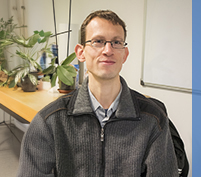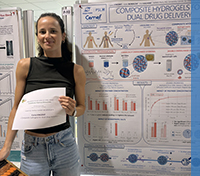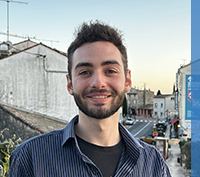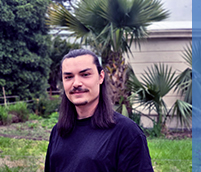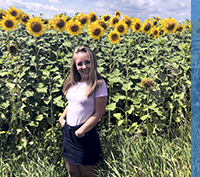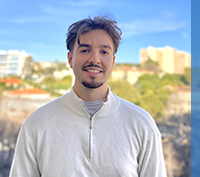PhD defence of Lucas Ravix
2 September 2022
Lucas Ravix defends his PhD in Computational Mechanics and Materials on Sept. 2nd, 22.
Multi-scales modelisation of Wire Arc Additive Manufacturing : from CMT process to large dimensions parts

Lucas Ravix conducted his PhD work in the 2MS team under the supervision of Michel Bellet, Charles-André Gandin, Yancheng Zhang and Gildas Guillemot. He defends his PhD in "Computational Mechanics and Materials" on September 2nd, 22 in front of the following jury:
– Mrs Muriel CARIN, Laboratoire IRDL
– Mr. Remy DENDIEVEL, SIMAP/GPM2
– Mr. Frederic DESCHAUX-BEAUME, Université de Montpellier
– Mr. Christophe TOURNIER, ENS Paris-Saclay
– Mr. Michel BELLET, CEMEF – Mines Paris – PSL
– Mr. Charles-André GANDIN, CEMEF – Mines Paris – PSL
– Mr. Gildas GUILLEMOT, CEMEF – Mines Paris – PSL
– Mr. Yancheng ZHANG, CEMEF – Mines Paris – PSL
Abstract:
Wire and arc additive manufacturing (WAAM) process allows complex geometries parts to be built, or functionalities to be added to existing components, by depositing the material in successive beads using a welding torch. The high material feeding rate, the accessible raw material price and its use with anthropomorphic robots in almost unlimited spaces make it a relevant industrial complement to the already industrially viable powder bed processes (LPBF). However, its development is still limited, due to the numerous physics and phenomena involved, the latter being highly dependent on process parameters. More specifically, the flows in the molten metal bath following the transfer of material and heat have a direct impact on the adhesion to the previous layer and its solidification. This leads to specific morphologies and a microstructure oriented in the direction of construction, all of which are dependent on the thermo-mechanical history of the complete part, due to heat accumulation. These coupled multi-scale interactions, inaccessible to a single numerical model, then guide the development of two multi-physics models in this research, which are based on previous work in welding and in the LPBF. The first model, called mesoscopic and at the bead scale, describes the complex cycle of the CMT process in a level set approach. Without considering electromagnetism, a contact and controlled loop model is developed to reproduce the cycle of the deposition. The process, stabilised by the electrode in contact with the pool, seems to be governed at first order by the surface tension, the shape of the previous deposit and its temperature. The second model, called macroscopic, describes the thermo-mechanical cycles of a part of industrial dimensions for times of several hours. Its speed, in a quiet element approach, is based on an extreme discretization of the material and heat transfer using material segments, adapted to use directly complex CAD parts. The mechanical resolution, combined with an unclamping model, allows the observation of residual deformations. In the end, the meso and macro models are confronted with numerous experimental resources and show good coherence in their own scales. The project therefore proposes a basis for future projects for multi-scale couplings, where numerical modelling could represent the behaviour of the material, from the inter-cordon roughness governed by the flows to the residual stresses in larges pieces.
Keywords: Additive manufacturing, Finite elements, Wire & arc process, CMT Cycle, Hydro-thermo-mecanic resolution, Multi-scale simulation


